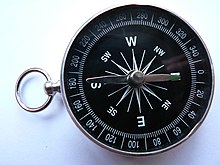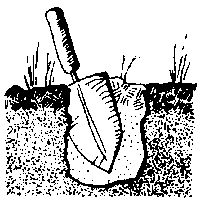| Revision as of 14:55, 13 December 2018 editRwood128 (talk | contribs)Extended confirmed users28,233 edits →List: Addition to insulation← Previous edit | Revision as of 15:00, 13 December 2018 edit undoRwood128 (talk | contribs)Extended confirmed users28,233 edits →List: Not clear why there were two lists. See Talk pageNext edit → | ||
| Line 9: | Line 9: | ||
| ==List== | ==List== | ||
| According to the eighth edition of '']'' (2010) book there are ten essentials, which are now referred to as the "classic" essentials. While still valid and widely used they do not reflect modern outdoor sports and all of the new gadgets that now are common.<ref name=edition8>{{cite book |title=] |publisher=Mountaineers Books |year=2010 |edition=8th |isbn=9781594851377}}</ref> | According to the eighth edition of '']'' (2010) book there are ten essentials, which are now referred to as the "classic" essentials. While still valid and widely used they do not reflect modern outdoor sports and all of the new gadgets that now are common.<ref name=edition8>{{cite book |title=] |publisher=Mountaineers Books |year=2010 |edition=8th |isbn=9781594851377}}</ref> | ||
| # Map and Compass (optionally supplemented with a ] receiver) | |||
| # ] | |||
| # ] and ] | |||
| # Extra clothing{{vague|date=December 2018}} | |||
| # ] (or ]) | |||
| # Prescriptions, over-the-counter medications such as aspirin, and first aid kit | |||
| # ] | |||
| # ]es | |||
| # ] | |||
| # Extra food | |||
| In 2003, the essential list was revised as part of the seventh edition of '']''<ref name=edition7>{{cite book |title=] |publisher=Mountaineers Books |year=2003 |edition=7th |isbn=9780898868272}}</ref> to keep up with modern equipment. The current edition, 8th edition<ref name=edition8/> published in 2010, continues with the new essentials list with no major revisions. The new list takes a "systems" or functional approach. | |||
| # '''Navigation'''. Topographic map and assorted maps in waterproof container plus a magnetic compass, optional altimeter or GPS receiver. | # '''Navigation'''. Topographic map and assorted maps in waterproof container plus a magnetic compass, optional altimeter or GPS receiver. | ||
| Line 33: | Line 21: | ||
| # '''Emergency shelter'''. Tarp, ], ], plastic tube tent, jumbo trash bags, insulated sleeping pad. | # '''Emergency shelter'''. Tarp, ], ], plastic tube tent, jumbo trash bags, insulated sleeping pad. | ||
| This book recommends supplementing the ''ten essentials'' with: | |||
| * ] and water bottles | * ] and water bottles | ||
| * ] for glacier or snowfield travel (if necessary) | * ] for glacier or snowfield travel (if necessary) | ||
Revision as of 15:00, 13 December 2018



The Ten Essentials are survival items that hiking and Scouting organizations recommend for safe travel in the backcountry.
The Ten Essentials first appeared in print in the third edition of Mountaineering: The Freedom of the Hills (January 1974). Many regional organizations and authors recommend that hikers, backpackers, and climbers rigorously ensure they have the ten essentials with them. However, personal preferences and differences in conditions may dictate otherwise and with experience most adventurers add and subtract from the list depending on the situation. Some lightweight hikers do not always carry all of the items and believe it is an acceptable risk they take in order to travel light and fast.
List
According to the eighth edition of Mountaineering: The Freedom of the Hills (2010) book there are ten essentials, which are now referred to as the "classic" essentials. While still valid and widely used they do not reflect modern outdoor sports and all of the new gadgets that now are common.
- Navigation. Topographic map and assorted maps in waterproof container plus a magnetic compass, optional altimeter or GPS receiver.
- Sun protection. Sunglasses, sunscreen for lips and skin, hat, clothing for sun protection.
- Insulation. Jacket, hat, gloves, rain shell, and thermal underwear.
- Illumination. Headlamp, flashlight, batteries. LED bulb is preferred to extend battery life.
- First-aid supplies, plus insect repellent.
- Fire. Butane lighter, matches in waterproof container.
- Repair kit and tools. Knives, multi-tool, scissors, pliers, screwdriver, trowel/shovel, duct tape, cable ties.
- Nutrition. Add extra food for one additional day (for emergency). Dry food is preferred to save weight and usually needs water.
- Hydration. Add extra 2 liters of water for one additional day (for emergency).
- Emergency shelter. Tarp, bivouac sack, space blanket, plastic tube tent, jumbo trash bags, insulated sleeping pad.
This book recommends supplementing the ten essentials with:
- Portable water purification and water bottles
- Ice axe for glacier or snowfield travel (if necessary)
- Signaling devices, such as a whistle, mobile phone, two-way radio, satellite phone, unbreakable signal mirror or flare, laser pointer.
Some experts recommend having duplicates of the Essentials in different sized kits: in pockets, on key rings, in pocket kits, belt pouches, belt packs, day packs, and backpacks.
Other lists
Other outdoor organizations have variations of the Ten Essentials pertinent to local conditions.
Boy Scouts of America's "Scout Basic Essentials" are quite similar (Map and Compass, Sun Protection, Extra Clothing, Flashlight, First-Aid Kit, Matches and Fire-starters, Pocketknife, Trail Food, Water Bottle, and Rain Gear.)
Utah's Wasatch Mountain Club lists extra water in place of food, as Utah is mostly desert terrain, and water is more difficult to find.
The Spokane Mountaineers list "thirteen essentials", which supplement the list with emergency shelter such as a space blanket, signaling device, and toilet paper and trowel (for sanitary disposal of human waste; the toilet paper also doubles as tinder for starting a fire).
The "Ten Essential Groups" is an alternative approach to essential gear selection. Items from each group should be chosen depending on the season, geographic location, and trip duration. In 2011, Columbia Sportswear adopted the "Ten Essential Groups" concept for their iOS app "Take Ten to the Greater Outdoors".
Central Arizona Mountain Rescue Association promotes the 12 Essentials, which includes Signaling Devices and Personal Items.
See also
- Bow drill
- Camping
- Dehydration
- Distilled water
- Drinking water
- Emergency shelter
- Firelighting
- Hiking equipment
- Hyperthermia
- Hypothermia
- Mini survival kit
- Navigation
- Orienteering (Scouting)
- Pioneering (Scouting)
- Scout Outdoor Essentials
- Scouting
- Solar still
- Survival kit
- Survival skills
- Thermal insulation
- Water purification
References
- "Ten Essentials". Great Outdoor Recreation Pages. Retrieved 2015-11-25.
- Jardine, Ray (2000). Beyond Backpacking: Ray Jardine's Guide to Lightweight Hiking. AdventureLore Press. p. 124. ISBN 9780963235930.
- Mountaineering: The Freedom of the Hills (8th ed.). Mountaineers Books. 2010. ISBN 9781594851377.
- "Six Ways In And Twelve Ways Out, Basic Skills Manual, Equipment Chapter". USRSOG.org. Retrieved 2014-07-20.
- "Packing Checklists for Camping Trips". 16 May 2017.
- "Precipitation in Utah". Retrieved 2009-06-06.
- "The 13 Essentials of the Spokane Mountaineers". Spokane Mountaineers. Archived from the original on 2007-09-28. Retrieved 2007-08-26.
- "The Ten Essential Groups". Dallas Sierra Club. Archived from the original on 2011-05-07. Retrieved 2015-01-28.
- "Take Ten to the Greater Outdoors". Columbia Sportswear. Retrieved 2015-01-28.
- "Central Arizona Mountain Rescue Association". 2018-03-20.
{{cite web}}: Cite has empty unknown parameter:|dead-url=(help)
Further reading
- Mountaineering: The Freedom of the Hills; 8th Ed; Mountaineers Books; 596 pages; 1960 to 2010; ISBN 978-1594851384.
External links
- "New Ten Essentials". Mountaineers Books. Archived from the original on 2012-09-16.
{{cite web}}: Unknown parameter|deadurl=ignored (|url-status=suggested) (help) - Wood, T.D. (2014-02-18). "The Ten Essentials". REI.